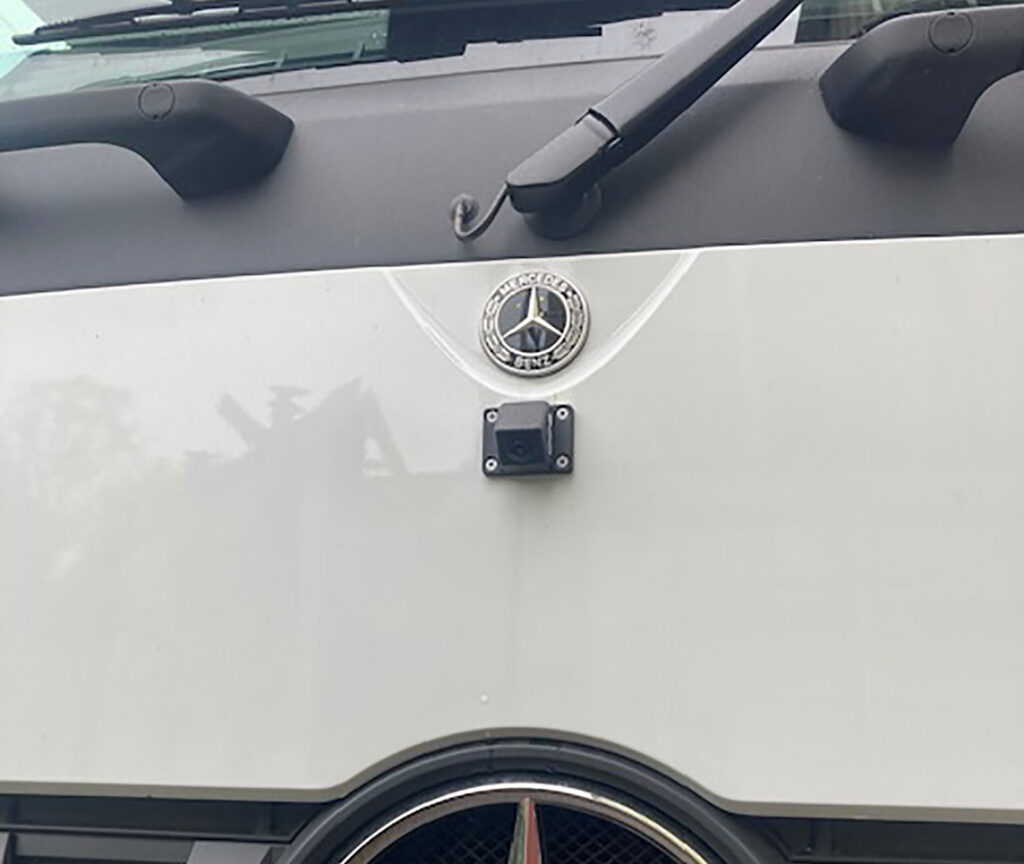
Pedestrian Safety System: Enhancing Safety and Compliance
A Pedestrian Safety System (PSS) is an advanced safety technology designed to enhance the safety of pedestrians in the vicinity of Heavy Goods Vehicles (HGVs).
These systems are specifically engineered to reduce the risk of accidents by improving the visibility of both the vehicle and its surrounding environment, allowing drivers to navigate safely through busy urban and construction areas where pedestrian traffic is prevalent.
Key Features of PSS Systems
360-Degree Cameras: PSS systems often incorporate multiple cameras positioned around the vehicle, providing a comprehensive view of the surroundings. This enables drivers to monitor blind spots and detect pedestrians that may not be visible through traditional mirrors.
Warning Alarms and Lights: Equipped with audible alarms and flashing lights, PSS systems alert drivers and pedestrians of potential hazards. These notifications encourage caution and increase awareness of nearby individuals.
Proximity Sensors: Advanced sensors help detect pedestrians and other obstacles, providing real-time feedback to the driver. This feature can integrate with braking systems to mitigate accidents by automatically applying brakes if a collision is imminent.
Integrated Display: Many PSS systems provide an internal display in the cab, allowing drivers to visualize their surroundings and receive instant alerts, greatly enhancing situational awareness.
Data Recording: Some PSS systems include data logging capabilities that record incidents and movements. This can help with incident investigations, safety audits, and improving operational training.
Left turn alarms are also fitted allowing pedestrians an audible speaking sound warning that the vehicle is turning left


Benefits of PSS Systems
Enhanced Pedestrian Safety: By providing drivers with more information about their surroundings, PSS systems significantly reduce the chances of pedestrian-related accidents.
Increased Driver Awareness: These systems help drivers recognize potential dangers, which is particularly critical in areas with high pedestrian traffic, such as construction sites or urban environments.
Compliance with Regulations: Implementing PSS systems helps HGV operators adhere to safety regulations and guidelines, reducing potential liabilities associated with accidents.
Reduced Insurance Costs: The implementation of advanced safety technologies like PSS can lead to lower insurance premiums, as insurers often offer discounts for operators maintaining high safety standards.
Regulations and Compliance
As safety standards continue to evolve in the transportation industry, various regulations have been introduced regarding the use of PSS systems in HGVs.
Key points of current regulations include:
EU Regulations: In the European Union, regulations such as the Vehicle General Safety Regulation require new heavy vehicles to be equipped with advanced safety features designed to improve road safety, including blind spot monitoring and effective warning systems.
Road Safety Act: Many jurisdictions have introduced legislation emphasizing the need for improved safety measures for HGVs, especially around urban areas. This includes recommendations or mandates for PSS or similar safety systems.
Local Regulations: Various cities and states may have specific requirements dictating the use of technologies that enhance pedestrian safety, particularly in high-density areas. Operators should ensure compliance with local laws to avoid penalties.
Best Practices for Safety: Alongside regulatory requirements, industry best practices encourage operators to equip their HGVs with PSS systems as part of their overall safety strategy. Regular training and reviews of safety protocols are also recommended.



